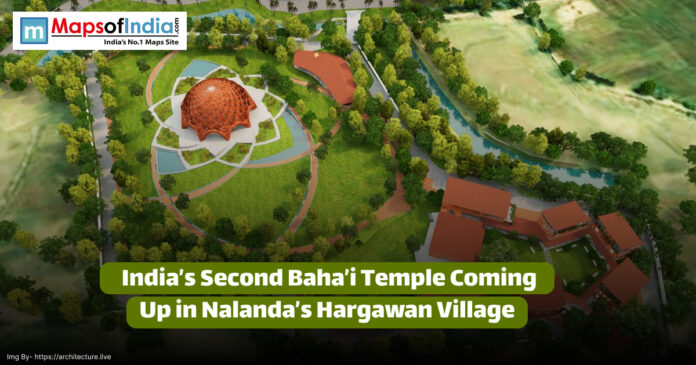Such is a landmark in spiritual architecture and religious tourism in India, whereby India is in the process of constructing its second Baha’i House of Worship in Hargawan village of Nalanda district of the state of Bihar, which is historically the birthplace of Buddha, the founder of the Buddhist religion. The project is a significant step in the Baha’i community’s fight to enforce unity, peace, and spiritual pondering, by using holistic areas that embrace every person irrespective of faith. The new temple will be a major landmark as it might compare to the spiritual and historical features of the Lotus Temple located in New Delhi.
The peaceful atmosphere and the accessibility of Hargawan village, right at the centre of cultural and spiritual Bihar, have been considered as an appropriate site for a peaceful setting. The area is rich in terms of history and philosophy, with it being an ancient seat of knowledge and religion. It is expected that the introduction of a new structure, such as the development of the Baha’i House of Worship, will restore the cultural landscape of this region, which will come back with a sense of spiritual satisfaction and tourism.
The construction was started with an official groundbreaking ceremony that was attended by the Baha’i community, village inhabitants, and administrative officers. The mixing of soil provided a sign of unity and the symbol of collective hope, as soil was mixed to bless the foundation with people from various villages involved. The architecture of the temple has been made to correspond to the attitude of harmony, simplicity, and universality. The choice of materials and the use of traditional design elements will define the local inspiration and culture, giving the structure a special combination of cultural identity with the contemporary spiritual design.
The temple will have a dome on the foundation of nine arches that are considered an architectural feature of the Baha’i temple around the world. These nine sides depict inclusiveness and openness of the Baha’i faith to everybody, irrespective of their religion and backgrounds. The design of the temple will ensure that light pours through different angles, thus giving a beautiful environment to meditate and pray. With landscaped gardens and community areas all around, the complex will not only be used as a worshipping place, but also as a reflection and a place to converse and serve as well.
The temple should also have developmental advantages in the local area beyond its spiritual meanings. Occupied by visitors and pilgrims on its completion, the region will probably experience better infrastructure, roads, and local businesses. The community engagement is another aspect of the project that includes utilizing domestic artisans and labourers, who deliver economic activity and skills building in the area.
People of Hargawan village have been proud to be nominated to host such a valuable spiritual centre. They do not only see the development as a construction project, but also as a way of recognition, unity, and development of their community. There is already a response to the temple with individuals stopping by the location to see the progress of the work and engage in community projects related to the initiative.
The Baha’i House of Worship in Nalanda is one of the religious buildings that are under construction and is a representation of the Indian varied spiritual tapestry. It enforces the message of unity in diversity, and it is a positive vision of a more open, inclusive and peaceful society. The temple will definitely be a beacon of light once it is established, and people will be attracted to it and visit it regardless of their faith.










